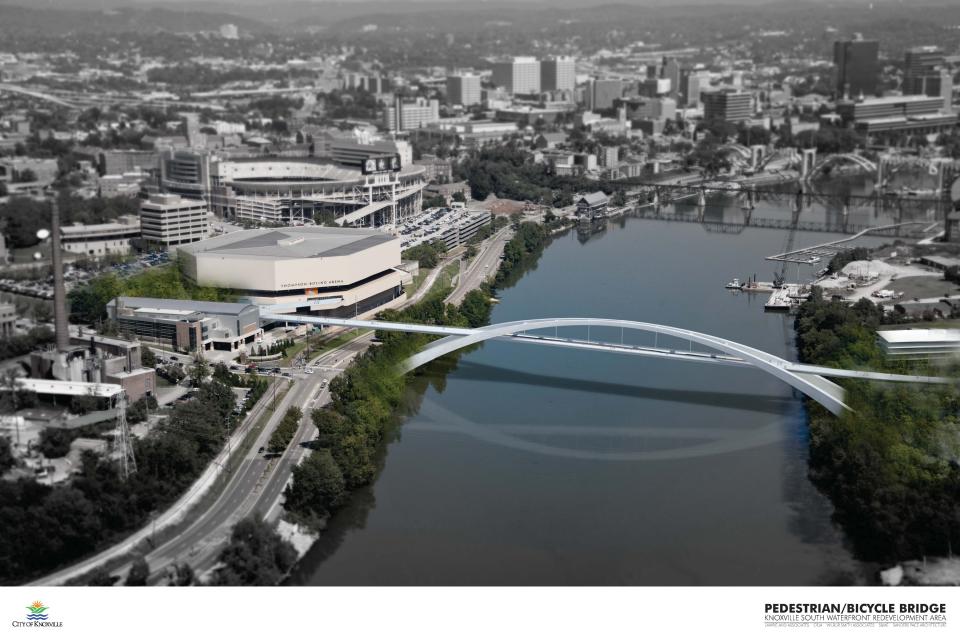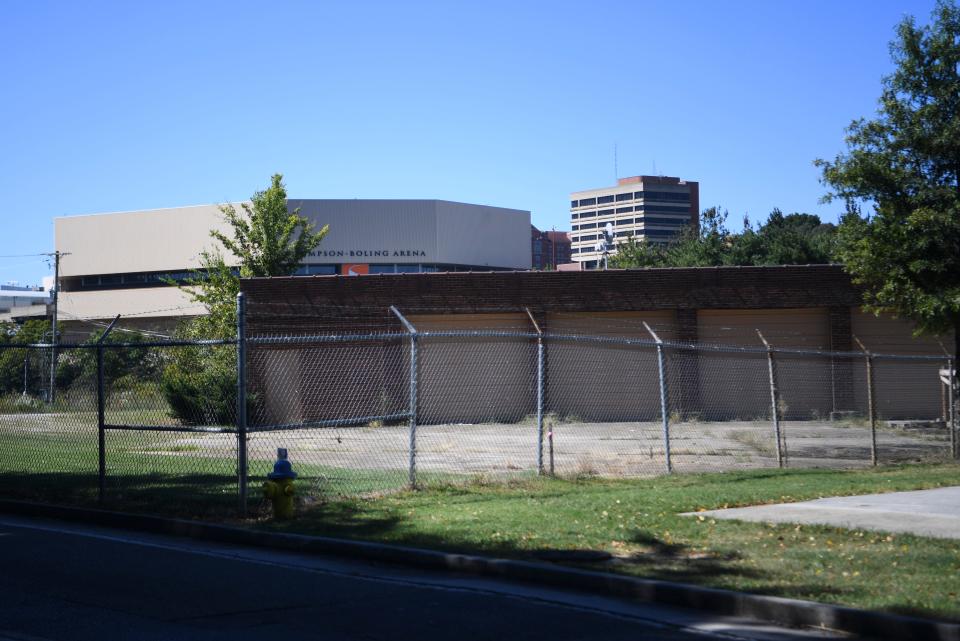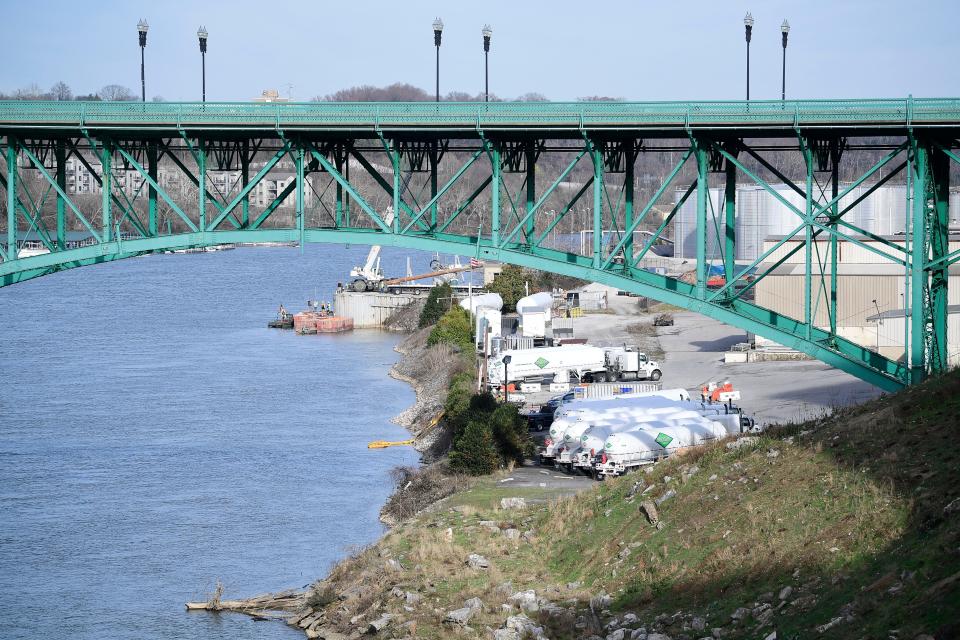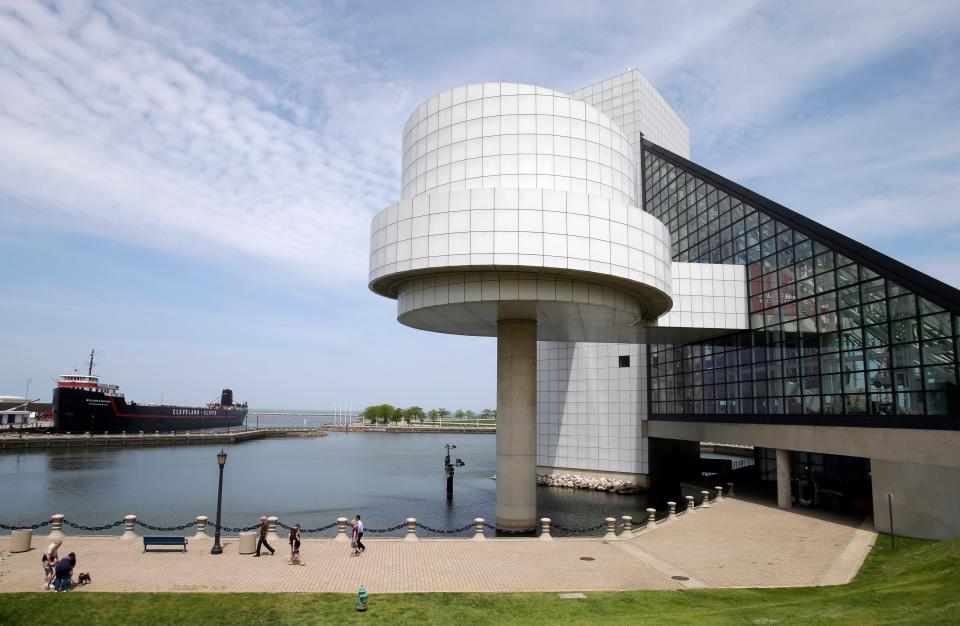South Waterfront – with or without pedestrian bridge – could welcome hotels and a museum
With or without a proposed pedestrian bridge, experts have identified dozens of ways Knoxville's South Waterfront could grow over the next few years, including through the addition of hotels, restaurants and a "statement piece" akin to the Tennessee Aquarium in Chattanooga.
The city of Knoxville voted Sept. 5 to accept $20 million in state funds toward a pedestrian bridge connecting the University of Tennessee at Knoxville campus to the South Waterfront. That bridge, as currently designed, is estimated to cost $70 million.
With this funding, which would be returned if the bridge is not built, city officials believe Knoxville has a better chance of receiving a $25 million federal grant that was denied during the most recent application cycle.
In the meantime, the city will work with a firm to rethink the design of the bridge with the goal of lowering the cost to closer to $55 million.

As this 13-year-old vision gains momentum, East Tennessee Realtors and the city called upon CRE Consulting Corps to evaluate the potential of the South Waterfront, from Sevier Avenue to west of Chapman Highway.
"The CRE team’s final report provides strategic guidance for local leaders as they work to create a riverfront that is an award-winning example for the nation that binds and connects people to the river, to Knoxville, and to the adjoining nature preserves and parks," East Tennessee Realtors wrote in a news release
Here are some of the most notable suggestions in the 53-page report analyzed by Knox News.
Hotels could benefit the University of Tennessee
Buildings west of the Henley Street bridge, near where the southern end of the pedestrian bridge would land, should be preserved immediately to encourage new uses such as mobile kitchens, creative bars and pop-up retail, according to the report.
If access to the river is increased in this area, with grassy spaces and picnic tables, a restaurant or music stage could even be positioned on a barge.
Long term, consultants see the potential for a hotel in this area − maybe two. With the land sloping up from the river, mid-rise buildings set farther back could still have views of the river without being directly on the water.

A hotel should have at least 150 rooms to encourage meetings. With the university directly connected to the area, UT Knoxville could leverage a hotel and its meeting areas to encourage continuing education.
"Alumni and others could be connected to the campus yet find a more relaxed area than being in the center of campus," the report says. "There could be integrated quality housing for faculty or graduate students, but we do not see this as a large component of the development."
Knoxville riverfront could benefit from a tourism attraction
The area immediately east of the Gay Street bridge has the most potential for a "statement piece," according to the report. This area still is used for industrial purposes, with Holston Gases owning nine parcels, and the properties have "the reputation of being difficult to acquire and difficult to develop."

However, the consultants view this lack of development as a "blessing." If the land were open for development, it likely would have been filled with apartments by now.
"This site presents a tremendous opportunity to create a destination − a statement piece − and we urge all stakeholders to dream big," the report says. "Other communities have successfully created meaningful attractions, and this could be the site to host a future museum or other award-winning and postcard-worthy institution."
Here are some examples from other cities included in the report:
Tennessee Aquarium - Chattanooga
Kiewit Luminarium - Omaha, Nebraska
Rock & Roll Hall of Fame - Cleveland, Ohio
Peace Center - Greenville, South Carolina

"The primary near-term recommendation is to engage with the owners and develop/maintain an ongoing channel of communication with the owners," the report said. "Planning over someone else's property is a sensitive issue and should be handled with permissions and communications with the current owner."
Sevier Avenue should keep growing as a retail destination
Part of the codes specific to the South Waterfront requires 70% of the ground level on new Sevier Avenue buildings to be glass. The intent is to encourage commercial and retail uses in multifamily buildings but, as outlined in the report, developers often request exemptions to the 70% rule.
Consultants suggest removing this requirement or, perhaps, requiring retail just on the corner of multifamily developments.
Forcing commercial development into multifamily buildings could create a retail community that's "sporadic at best," they said. The neighborhood feel of Sevier Avenue sought in the South Waterfront Vision Plan is more likely to be created through retail spaces in smaller developments on empty lots.
Infrastructure improvements will be important throughout South Waterfront neighborhoods, according to the report. Certain improvements, including underground utilities, already are being worked out by the city through its plan to overhaul Sevier Avenue with a streetscape.
The city's streetscape plan also calls for adding on-street parking, creating new bike lanes and building a roundabout at the intersection of Island Home Avenue.
Consultants suggest closing Council Street and turning Sevier Avenue, which splits at its western end, into a two-way street in both directions. Sevier Avenue also could benefit from a "placemaking entrance" welcoming people to the neighborhood, according to the report.
Ryan Wilusz is a downtown growth and development reporter. Phone 865-317-5138. Email ryan.wilusz@knoxnews.com. Instagram @knoxscruff.
Support strong local journalism by subscribing at knoxnews.com/subscribe.
This article originally appeared on Knoxville News Sentinel: South Waterfront in Knoxville could grow without pedestrian bridge

